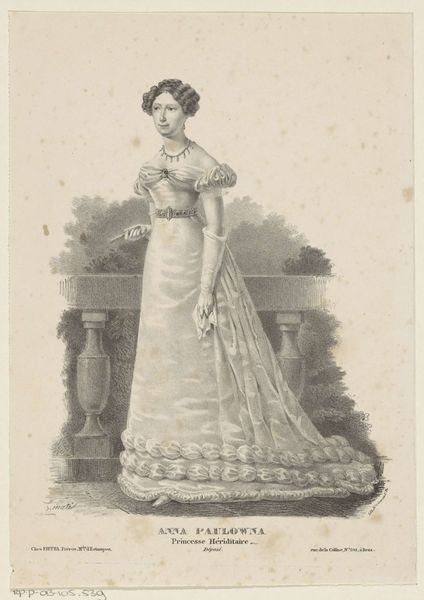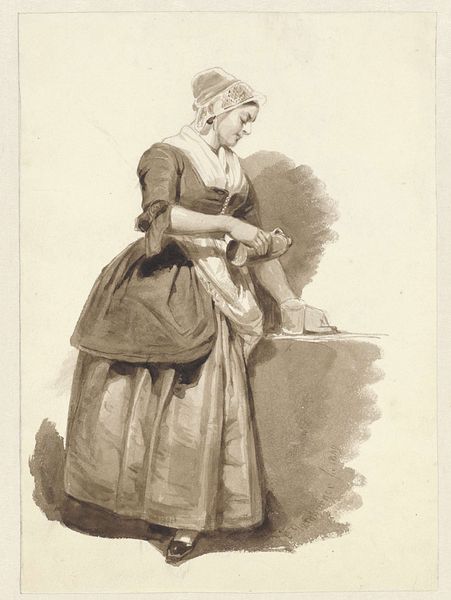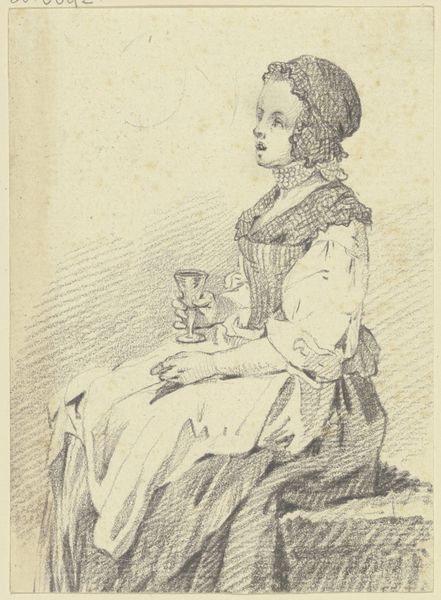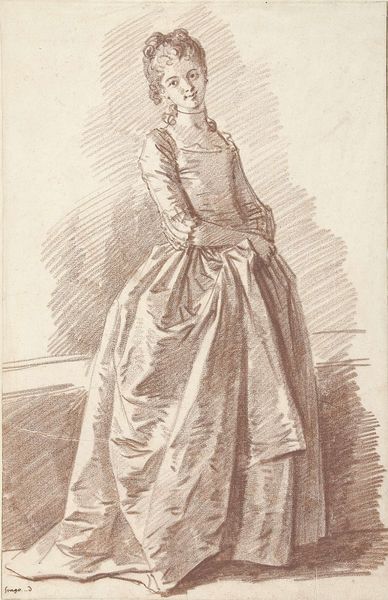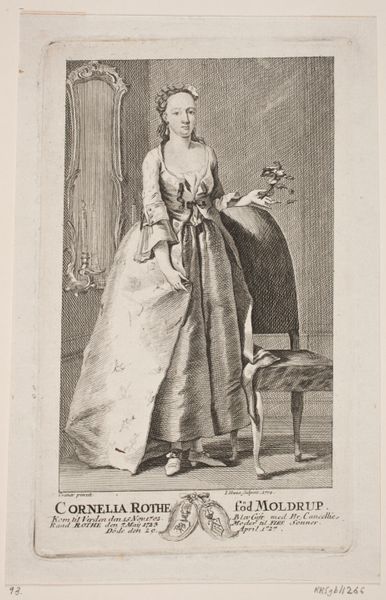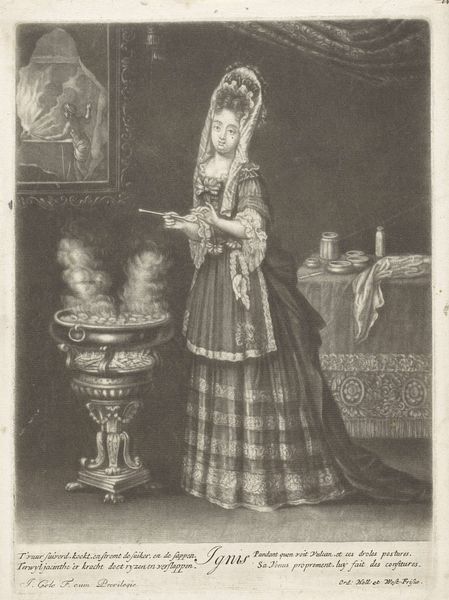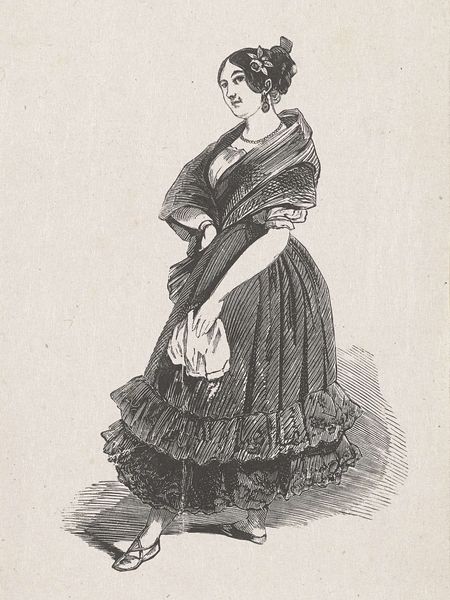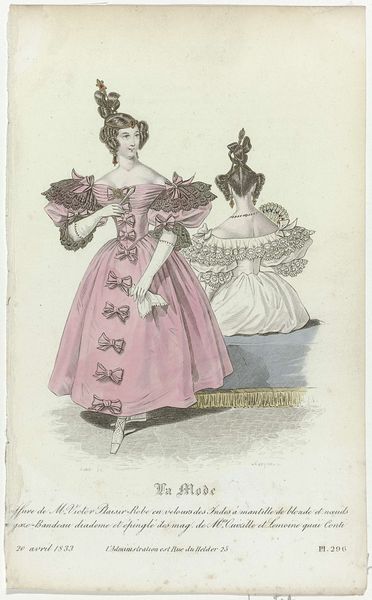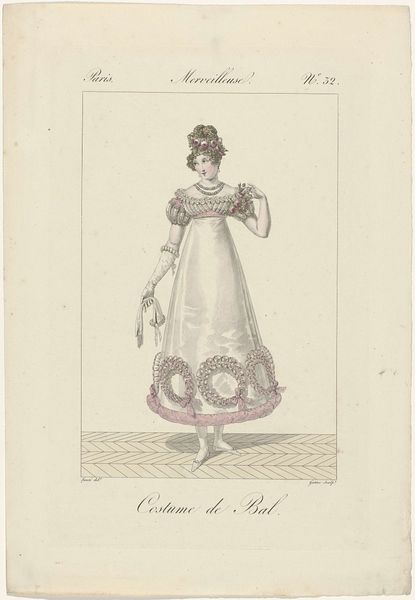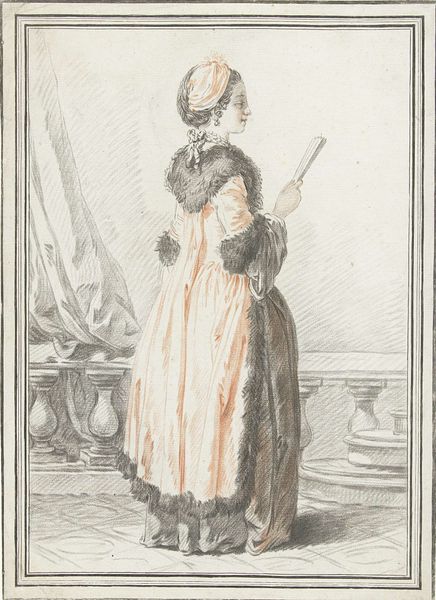
Dimensions: height 318 mm, width 196 mm
Copyright: Rijks Museum: Open Domain
This etching of a maidservant with a tea tray was made by Carl von Pechwell in eighteenth-century Vienna. The print offers us a glimpse into the social conventions of the time. We can see how the image creates meaning through its visual codes: the maidservant’s posture and clothing, the tea set on the tray, and even the text at the bottom of the print which dedicates the work ‘to the most illustrious nobility of Vienna.’ These elements speak to the strict social hierarchy of the time, in which each individual had a defined role and place. The image is self-consciously conservative, reinforcing existing social norms rather than challenging them. The presence of the tea set is also significant; the rituals and social practices of the time were powerful symbols of status and cultural capital. To better understand this work, historians might research Viennese social structures of the 1700s. In doing so, we can understand that the meaning of art is contingent on its social and institutional context.
Comments
No comments
Be the first to comment and join the conversation on the ultimate creative platform.
